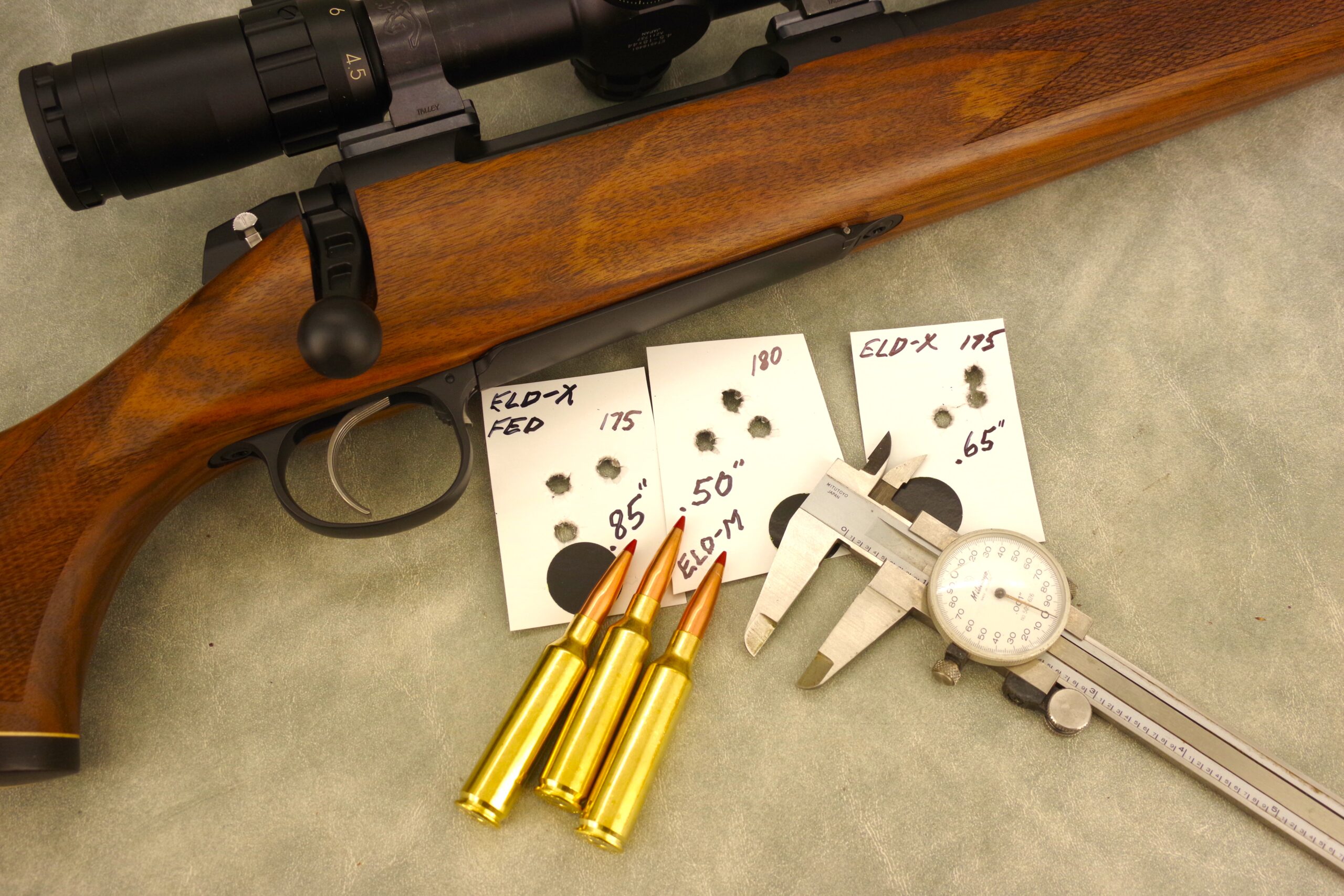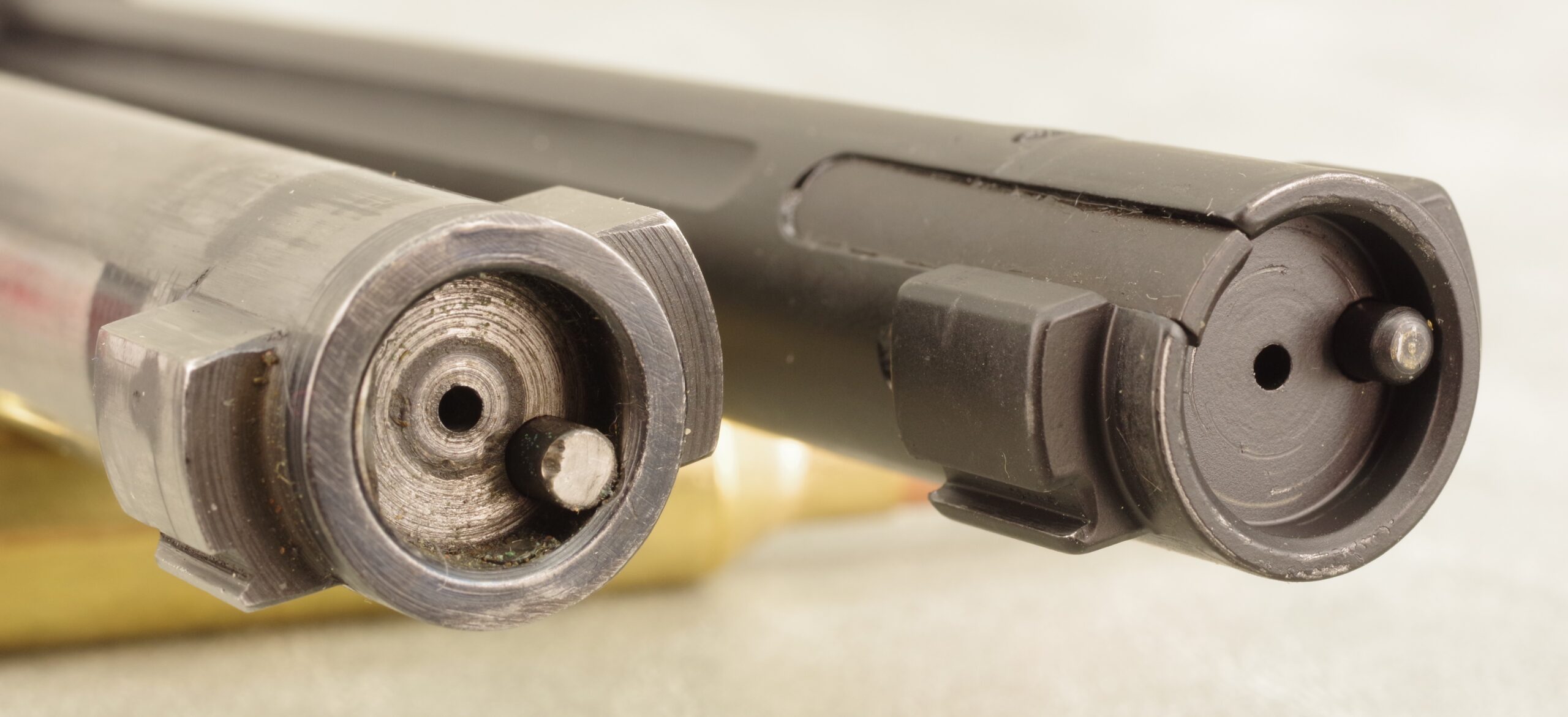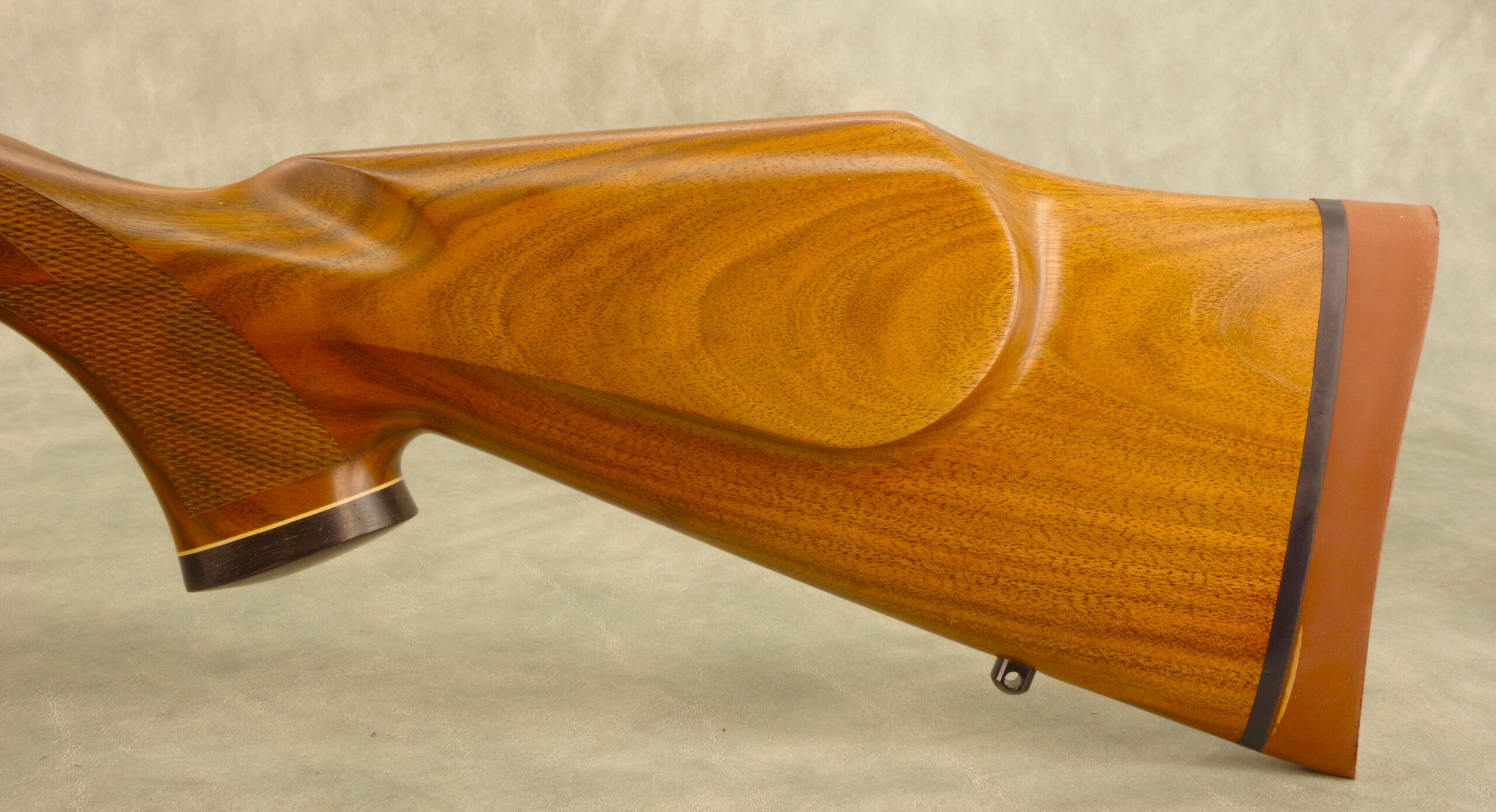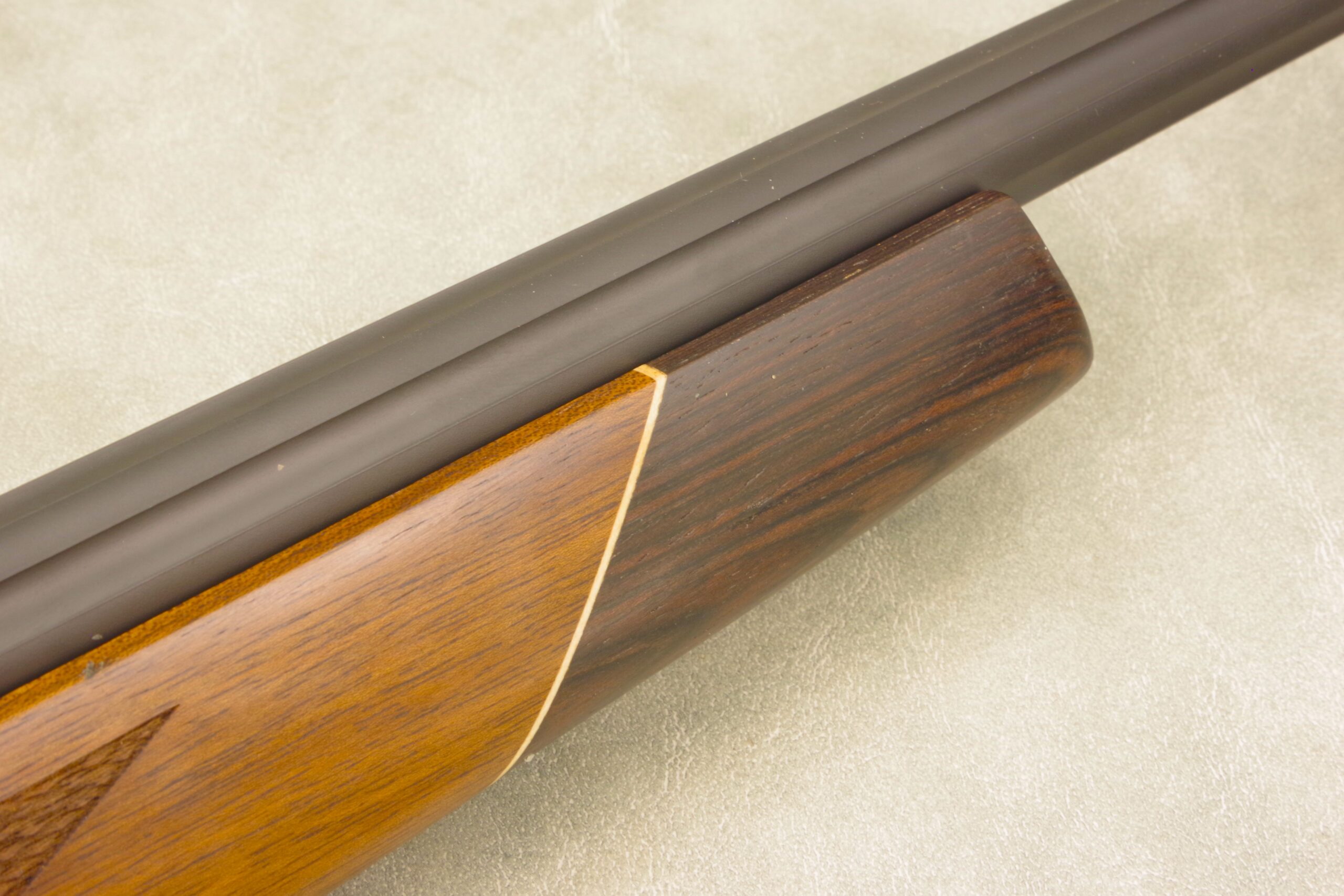New, Retro Deer Rifle
Weatherby’s 307 Adventure SD Revives Company’s Stylistic Origins
By Jon R. Sundra
For me, one of the most memorable events to have occurred in the firearms industry was the introduction in 1957 of the Weatherby Mark V. And I don’t believe that’s overstating the case because that rifle, or more accurately, that look, had a profound impact on the industry, the results of which are evident even today. In a word, Weatherby brought glamour to the hunting rifle.

The Weatherby Model 307 test gun fulfilled Weatherby’s sub-MOA claim with all three of the loads used. Above data was the result of shooting five 3-shot groups from the bench at 100 yards.
I was a budding, starry-eyed 17-year-old at the time, and to me, the Weatherby Mark V was the most beautiful thing I’d ever seen. The way I see it, the visual appeal — the personality, if you will — of any rifle is determined by the stock. The barrel and receiver contribute little to the picture; it’s the stock, its silhouette, and its three-dimensional geometry, that is its visual essence.
By the early 1960s, you couldn’t sell a bolt-action rifle if it didn’t have the Weatherby look. Some were subtle facsimiles because they featured a half-hearted Monte Carlo comb and pistol grip, while others were downright copies, right down to the reverse-sloping comb, an extended and fully formed pistol grip; a slab-sided, flat-bottomed fore-end, and a reverse-angle Rosewood fore-end tip, which along with the grip cap and recoil pad, were accented with white spacers.
As for the barreled receiver and bottom metal unit, blinding, chrome-like blue jobs were de rigueur, but few could match the Mark V when it came to that.

With the exception of the M-16-type extractor, the 307 bolt, at right, is identical to the 700 bolt, right down to the anti-bind lip at the base of the right-side locking lug.
If there was one thing that ended the dominance of the “Weatherby look,” it was Bill Ruger. In 1977 and 1978, he introduced his Model 77 bolt action and Ruger No.1 single-shot rifles. Both came with rather plain-looking straight-comb classic stocks. Even so, this look became the new standard for rifle stock design right up to the present day.
That’s not to say that the Weatherby look has vanished from the scene. Far from it. You don’t have to look too hard to find plenty of similar-looking stocks from other makers, and Weatherby, of course, has always offered several iterations of the original among their Mark V and Vanguard offerings.
This brings us to the Model 307, the first new Weatherby bolt action rifle in over 50 years. The rationale for the 307 is rather interesting, as is the fact that the designation “307” is the area code of Sheridan, Wyoming, Weatherby’s home.
To quote from the press release, “Model 307’s 2-lug fully cylindrical carbon steel design was purpose-built to accommodate the vast offerings of stocks, triggers, rails, mounts, and magazines that exist in the marketplace.”



These three photos show three designs pulled from the original Weatherby style: Monte Carlo dip, pistol grip cap and angled rosewood fore-end..
In other words, Weatherby is saying this is our version of the Remington 700. As I stated in the previous installment of this deathless prose wherein I reviewed the Christensen Arm’s Evoke, copying the Model 700 ain’t a bad thing; after all, it is the most copied and best-selling commercial sporting rifle in history.
Having said that, if you’re familiar with the Remington 700, there’s very little you don’t already know about this new Weatherby. There are, however, some noteworthy, albeit minor, changes.
Unlike the 700, the 307 employs an M-16-type extractor, which I prefer to the annular spring that’s held captive within the rim of the 700’s recessed bolt face.
The top hemisphere of the bolt body sports three lengthwise flutes, and the middle one has three small vent holes that would direct gases from a pierced primer or case head separation out the ejection port.
At the rear, the bolt shroud is quite handsome and very similar to that of the Sako 90. Another departure from the 700 is the fact that you can field strip the bolt without tools, but it’s not the easiest thing to do if you have arthritic hands.

Look familiar? The basic Model 700 design is probably the simplest, most straightforward design of a bolt action rifle. The 307 is designed to be able to use many M700 aftermarket parts.
With the bolt held vertically on a hard surface, pulling downward on the bolt shroud allows the bolt handle to be pulled free from the body, freeing the striker assembly. The handle itself is partially skeletonized, which perhaps only saves a gram or two, but hey, it looks cool!
The receiver is a simple tube with the same recoil lug arrangement as the 700, an eccentric washer sandwiched between the ring face and barrel shank.
It has the same footprint as the 700, as does the old BDL hinged floorplate bottom metal unit, so stocks are interchangeable. The trigger is also identical to that of the 700 but without the hokey linkage arrangement for actuating the bolt stop/release. That job is accomplished with a pivoting lever on the left side of the receiver bridge, which is a more direct and reliable system.
It should be noted that the receiver bridge is of the same height, curvature and hole spacing as the receiver ring, so both use the same bases (they also fit the Savage 110-series).
For the trigger, Weatherby went to the Triggertech folks and an excellent choice it is. It’s a 2-position side safety that doesn’t lock the bolt when engaged, and it’s externally adjustable from 2.5 to 5 pounds.
Having waxed ecstatic about the “Weatherby look” at the outset of this opus, we, of course, asked to review the Adventure SD model, the one that duplicates Roy Weatherby’s iconic “California-style” stock.
Our test gun was chambered in 7mm PRC, my personal favorite for now, anyway. I say that because my “favorite” has changed over the years with advancements in cartridge design.
Out of the box, the Adventure weighed 7 1/2 pounds without the muzzle brake, which comes standard. The 24-inch barrel, which is fully floated, is fluted, and the muzzle is threaded 5/8×24 with a protective cap furnished.
The muzzle brake adds 2 inches to the barrel length, bringing the overall length to 46 ¼ inches. One concession made to current trends is that the barreled action and bottom metal unit wear a non-reflective Black Graphite Cerakote finish rather than the mirror-like blue job for which Weatherby was so famous back in the day.
The stock, though, does wear the traditional Weatherby high gloss finish. Even if you’re not a fan, you got to admit that the overall package makes for one very handsome rifle.
To ready the gun for a little range work, we mounted a Bushnell LRTS 4.5-18×44 Tactical scope using Talley’s superb bases and rings. Ready to go, the gun weighed 8 pounds, 14 ounces.
At the range, there were no surprises. But then why would there be? This basic action has remained virtually unchanged since 1948 with the introduction of the Remington Models 721/722.
Accuracy-wise the gun performed as expected, easily meeting Weatherby’s sub-MOA guarantee with all three factory loads. I am not a fan of muzzle brakes, but when I’m shooting some 60-plus rounds of a magnum-class cartridge off the bench, I use `em!
The TriggerTech trigger was superb but was factory set at 4 pounds, so I adjusted it down to 2 1/2. I can’t tell you how many Remington 700 and 700-like rifles I’ve tested over the years, and damn few were as smooth as this 307.
Just tilting the muzzle upwards about 15 degrees from horizontal, the unlocked bolt would slide fully open! And the bolt and raceway were bone dry!
The 307 Adventure SD has an MSRP of $2,149 and is available in 16 calibers from the .22 Creedmoor to .300 Weatherby Magnum, including Federal’s new 7mm Backcountry.
The 307 line is comprised of nine models starting with the Range at $1,179. It should be noted that Weatherby has wisely chosen to make the 307 action available as a component.
With the myriad of after-market accessories available for the Remington 700, one can build a custom rifle from the ground, up. The price for the action-only is $749. You can check out the entire 307 line at www.weatherby.com
RANGE PERFORMANCE
CARTRIDGE/LARGEST GROUP/SMALLEST GROUP/AVERAGE
Federal 175 gr. ELD-X 1.15/ .85/ .90
Hornady 175 gr. ELD-X 1.40/ .65/ 1.10
Hornady 180 gr. ELD Match 1.15/ .50/ .95
Above data was the result of shooting five 3-shot groups from the bench at 100 yards.

